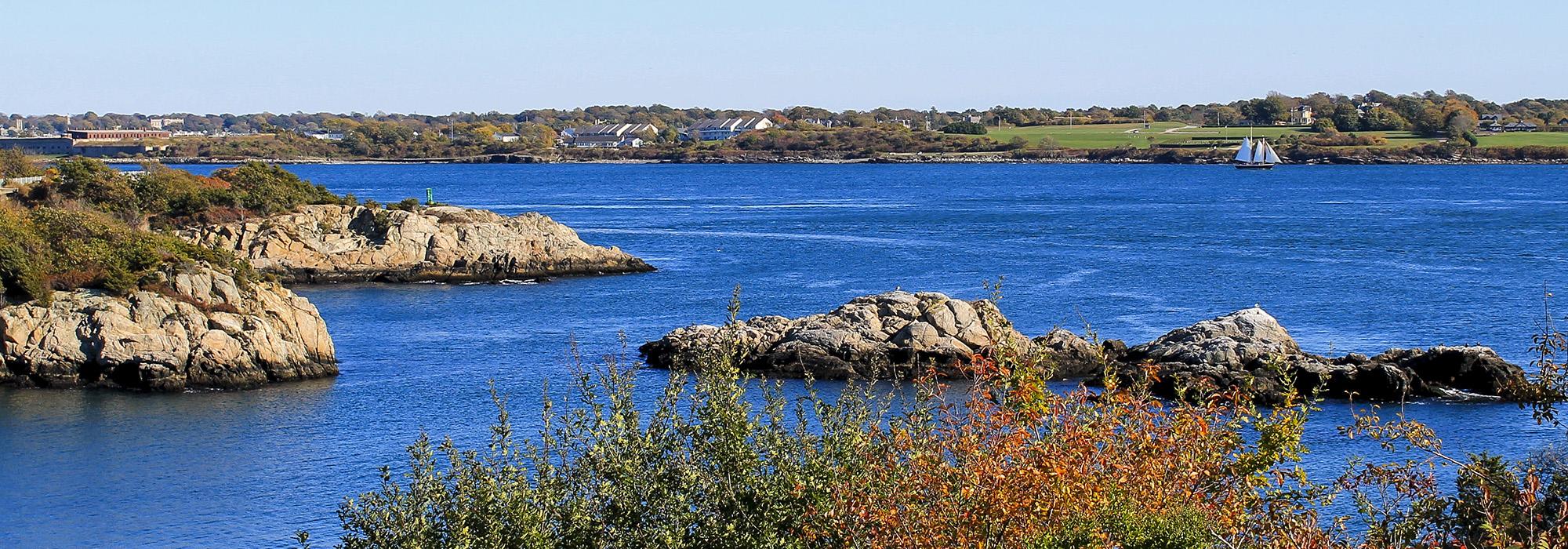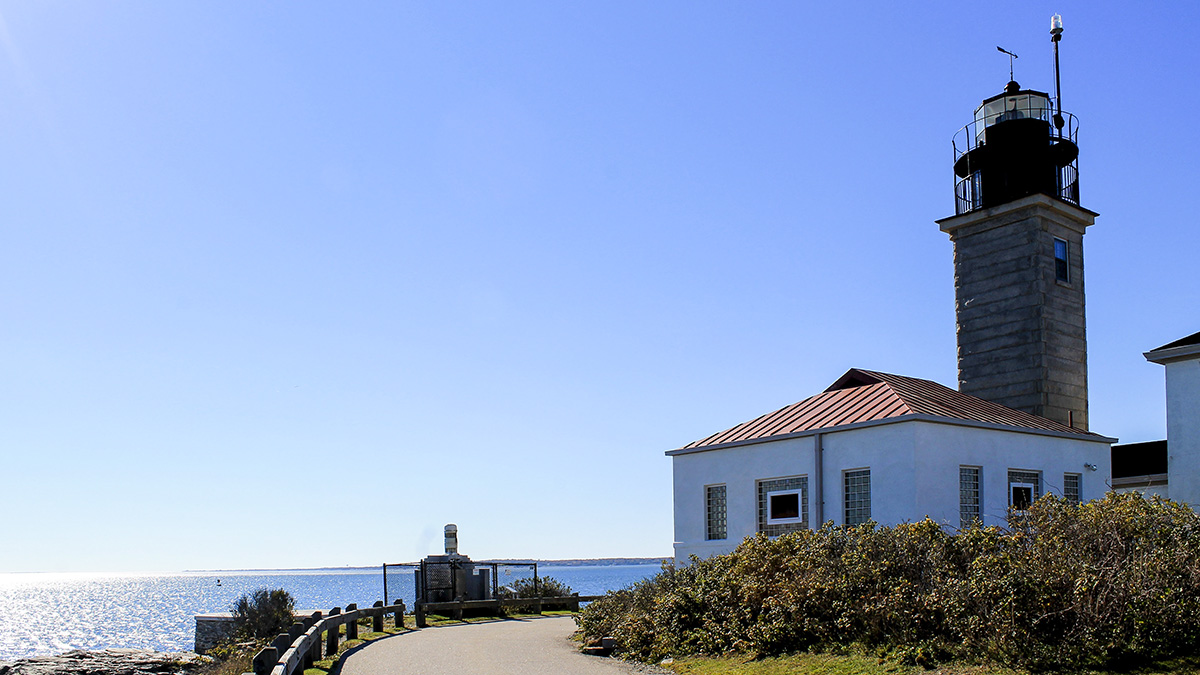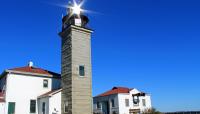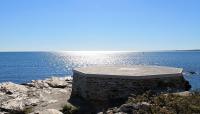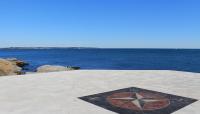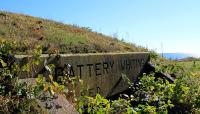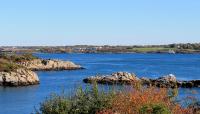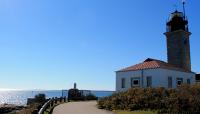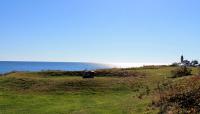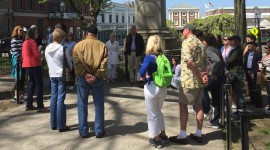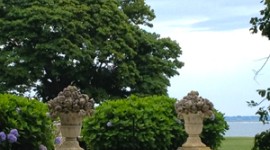Landscape Information
Located on a strategic four-acre parcel at the southernmost tip of Conanicut Island, which divides the east and west passages of Narragansett Bay, this lighthouse was built in 1856 and is the third to occupy the site. During the nineteenth century the lighthouse was critical to advances in gas illumination and auditory fog signal technologies. Constructed of rough-faced grey granite blocks, its ten-foot-square, 65-foot-tall tower is surmounted by an iron, decagonal lantern room accessed on the interior by a spiral staircase. Immediately north of the lighthouse are the oil room and two nineteenth-century residences for the keeper and assistant keeper (the latter now occupied by the Beavertail Lighthouse Museum); while to its east is the signal house with projecting fog horns (occupied by the Beavertail Aquarium since the 1980s).
The surrounding parkland is an open, flat expanse of lawn encircled by an asphalt access road, forming a driveway between the oil room and the garage. Brick walkways on the west and south approach the buildings from the road. A rail fence bisects the property and borders its southern tract, while a low stone wall traces its northern perimeter. Across the road to the south lie the foundations of an earlier lighthouse (built in 1755) exposed by a hurricane in 1938. Along with Fort Burnside on its northern border, the property is now part of Beavertail State Park. Vestiges of the fort’s Battery Whiting, a concrete gun battery active from 1942 to 1946, are located nearby. The light was automated in 1972 and the site was listed on the National Register of Historic Places in 1977.



